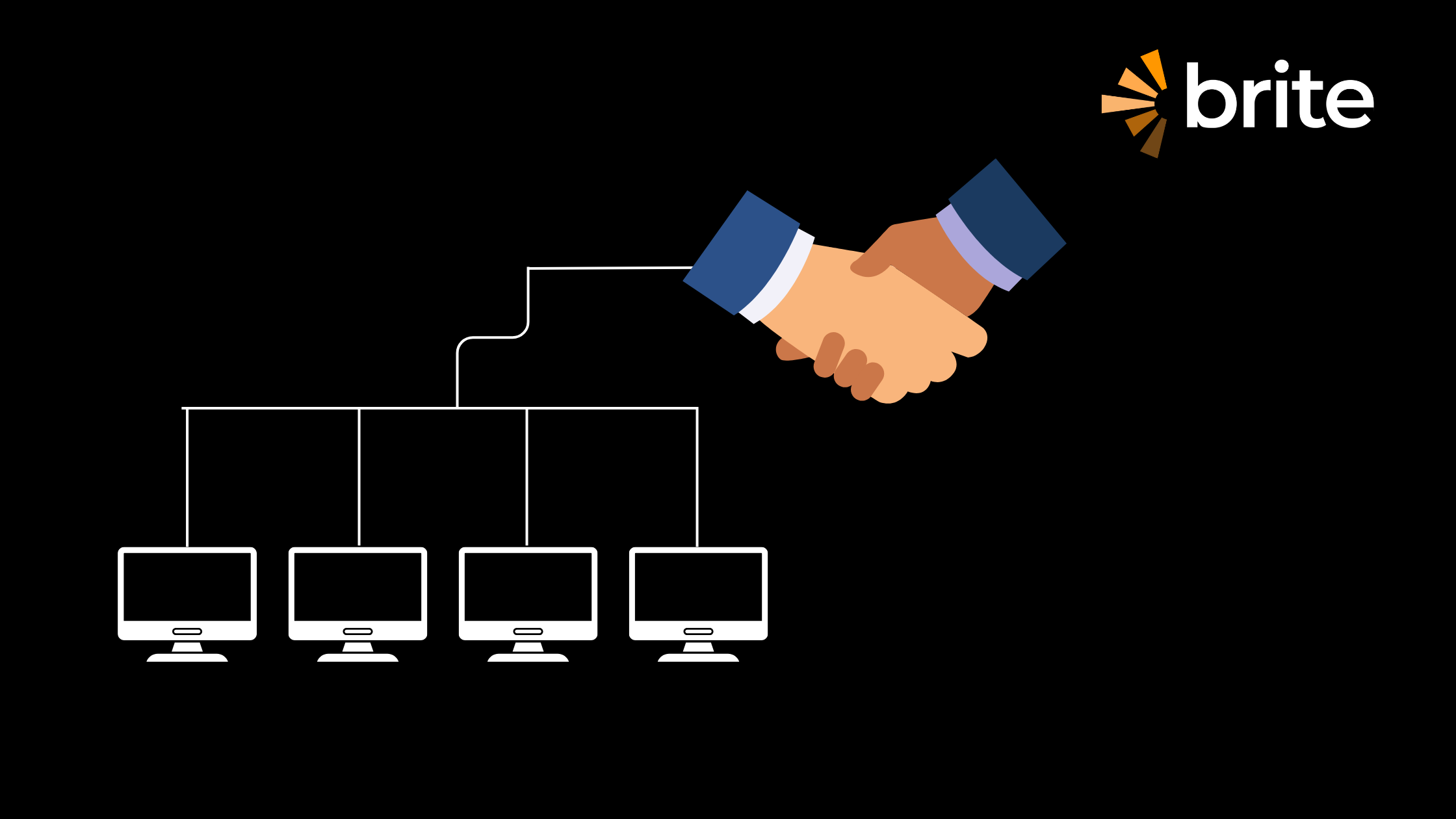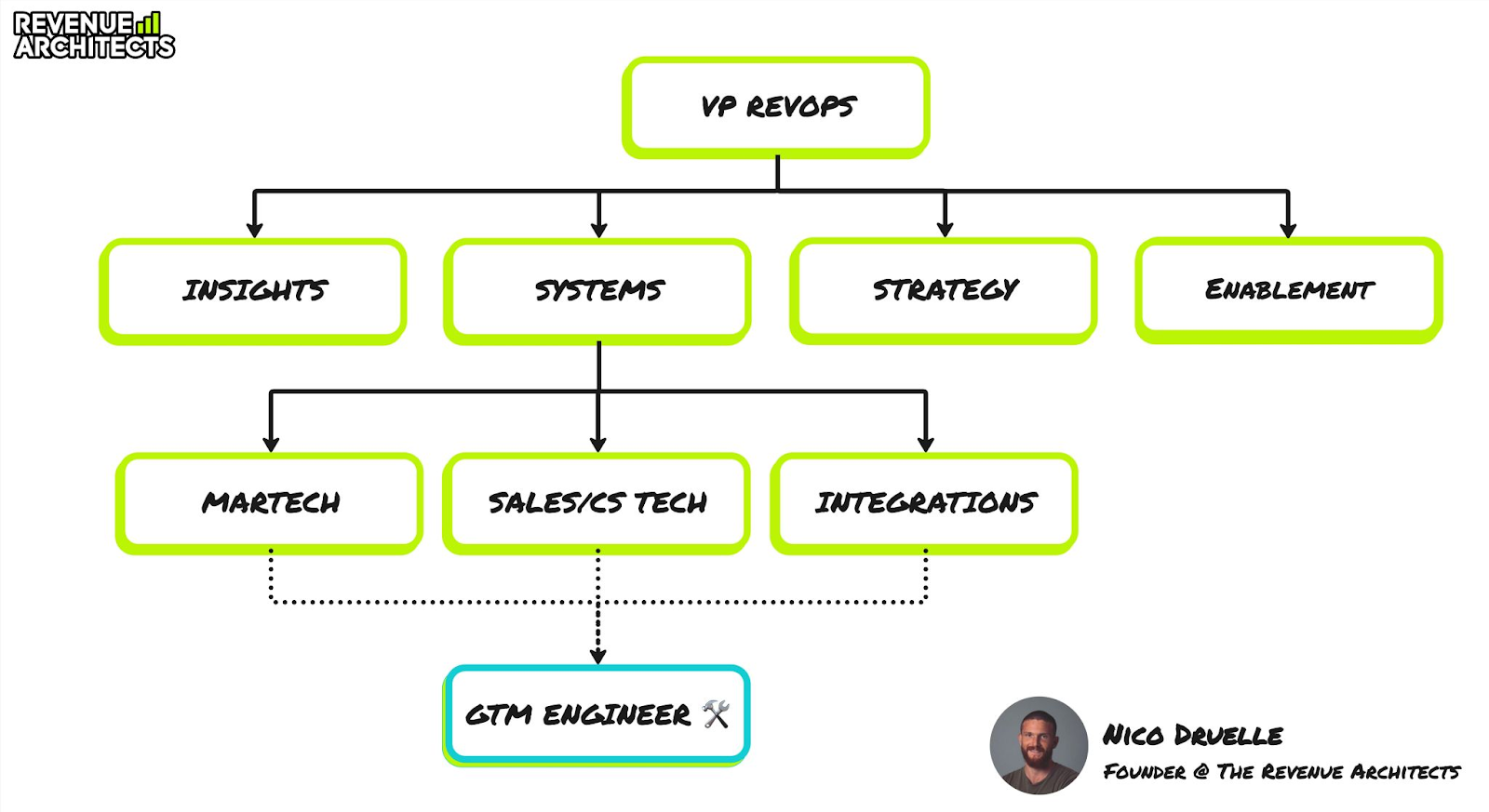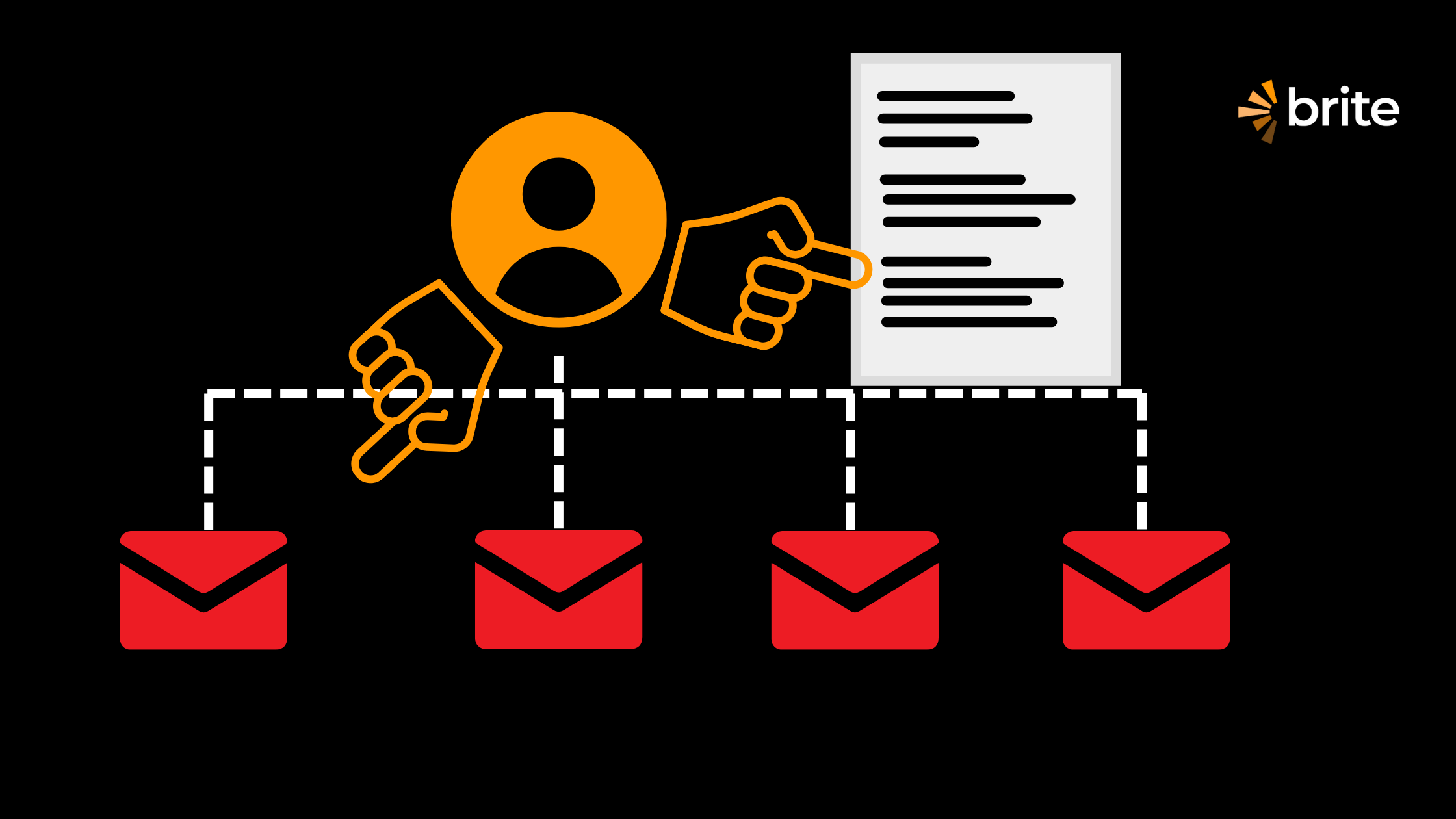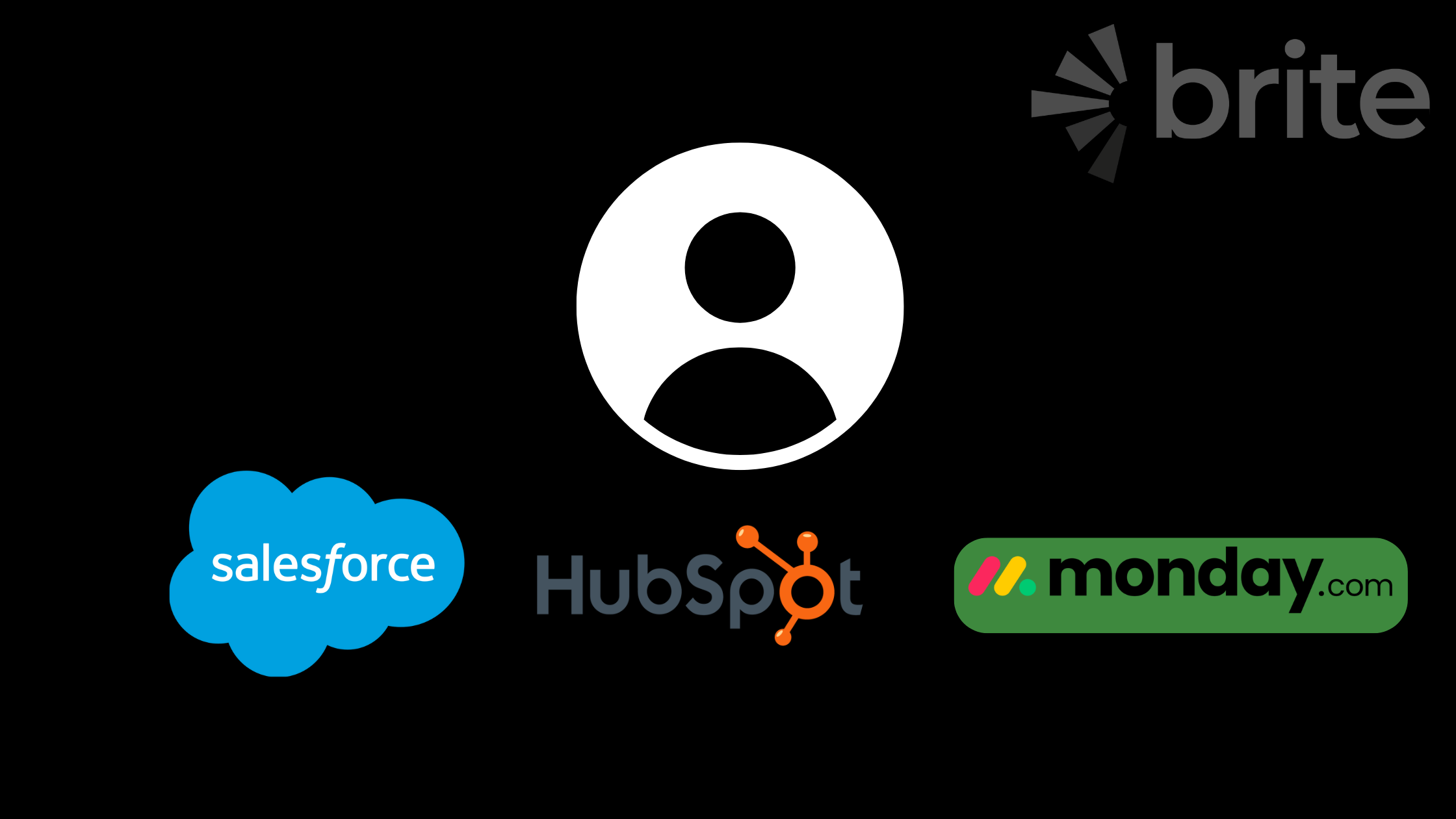
In roughly 2023, sales data tool powerhouse Clay coined a new, paradigm-shifting buzzword: the GTM Engineer. Now, they claim about 100 GTME jobs are showing up on job boards online every month.
Most of us in marketing are already somewhat familiar with go-to-market (GTM) strategy. Many of us claim to be familiar even if we aren’t. That’s largely because the origins and meaning of the phrase are disputed. Some believe it was first coined in this 1990 Harvard Business Review article. In it, famed Wharton professor Karl Ulbricht defined GTM strategy as:
“The system by which a company transforms its addressable market into its customer base.”
So, is GTM strategy just sales and marketing combined? It’s all that and more. It’s everything necessary to convert your target customers into buyers and keep them there. This tends to end up being a combination of:
- Marketing – Performing actions that push potential customers to interact with your product’s sales funnel. A podcast, a newsletter, a social media presence, an event, etc.
- Sales – The act of bringing interested parties (or warm leads) closer to a sale through proactive engagement (often by calls), answering questions, and sometimes pushing the timeframe to encourage a buy (offering limited-time promotions etc).
- Customer success – Maintaining a relationship with existing customers so that they remain satisfied with your product/service.
So with this definition, what exactly is a GTM Engineer if not a new term for someone who does sales, marketing, and customer service combined? And why are marketing teams in tech racing to get them on their team while most of us scarcely understand what the heck they do?
At Brite, we’re a highly specialized recruitment agency (we hate saying we’re recruiters as we don’t like to group ourselves with them, but it’s the easiest term) for sourcing skilled remote marketing talent. One of our hottest roles right now is the GTM Engineer. We want to explain once and for all:
- What GTM Engineers really do
- What skills GTM Engineers need to have
- How to test if a GTM Engineer knows their stuff
- Where to hire GTM Engineers
Let’s get started.
What is a GTM Engineer?
A GTM Engineer, in the most simple terms, is the individual who links together and operates all the different parts of your GTM strategy. It’s an operational role requiring deep knowledge of sales, marketing, and customer success.
However, GTM Engineers differ from other backend operations roles like RevOps in that they tend to be more focused on the sales and marketing side of the business. Our CEO, Anil Yasyerli, likes to define them as tech/AI-enabled SDRs.
Why are GTM Engineers Called Engineers?
The engineer moniker is because most companies today use a combination of software tools to run their GTM strategies. GTM Engineers must have at least a basic understanding of programming and modern AI to make these tools interconnect.
Why Are GTM Engineers Popular Today?
For this, we’ll just give you the words for this right off the Clay site. They are in the business of convincing us we all need GTM Engineers (and we agree).
“First, GTM tactics became commoditized. The sales tactics that worked in 2010 fall flat today. Prospects get hundreds of generic cold emails, and spam filters ignore "quick question" subject lines. Winning companies continuously find a competitive edge, or GTM alpha, with unique data and differentiated plays.
Second, AI eliminated the need for custom manual research and engineering. AI can research thousands of companies at once. APIs can pull data from anywhere. What required either manual research or engineering talent two years ago is now easy no-code automation. This unlocked the ability to test highly targeted, creative approaches at scale.
These shifts created both the need and the opportunity for GTM Engineering. The commoditization of tactics demanded creativity. AI made that creativity executable, collapsing the gap between idea and execution from months to hours.
GTM Engineers find and fix revenue bottlenecks. They can discover that you should spend resources targeting NYC cafes with $10-20 entrees who just joined DoorDash—and help you reach them tomorrow, not next quarter.”
But this is the word of one company that makes a lot of money off convincing companies they need GTM Engineers using their software. Is it true that it’s getting so much harder to do classic GTM strategy?
Why GTM Strategy is So Much More Complex Today
Can you remember a time in the past five years when you opened your inbox and didn’t have at least one spam email?
We’re consistently slammed by cold outreach emails that don’t really seem like they hit the mark.
Some institutions have conducted studies on this subject, including email automation business Superhuman (recently acquired by Grammarly). They launched a much-cited research piece using internal data that showed a whopping 22% of office workers said they were even considering quitting their jobs over too much email.
Internally, tech GTM (sales, marketing, and CS) teams have hit a wall. As internal tools became more advanced, many of them began using martech (marketing tech) and salestech tools internally that didn’t interface with everything else.
For example, you might have:
- A marketing team that is tracking leads from a lead magnet on an Excel sheet. They also measure interactions with the website through a completely disconnected GA4 account.
- A sales team that manually enters leads into a Hubspot account connected to an email marketing tool that blasts cold emails.
- A customer support team running everything off an Intercom dashboard that again requires them to physically enter in each customer that arrives.
You see how this is a formula for a strange (and often robotic) customer experience?
Someone who has already expressed interest in a service by downloading a lead generator might start getting emails designed for people who are barely interested in it. A customer who has successfully onboarded through a long sales process might suddenly be greeted by a CS team that knows almost nothing about them or their business.
Teams need someone to sit on top of these processes and tools, understand them intimately, and make sure they connect so that customers feel like they are getting a personalized experience.
To assuage these issues, a GTM Engineer might:
- Set up lead scoring rules that only pass leads to sales when certain signals appear
- These leads automatically enroll in a sales outreach flow
- Marketing and sales can see which leads progress and churn and adjust their campaigns in real time.
- Leads that become customers can be passed directly to CS with transcripts of previous conversations that have been summarized by AI
What Skills Should GTM Engineers Have?
This is where definitions really start to become complicated. Everyone is positive about what generally, a GTM Engineer should be able to do, but few have sat down to define what exact skill set they should have.
Other online sources list them as having broad skills in marketing fundamentals as well as all of the technical aspects of marketing. They need to understand the evolving list of tools that make up the sales/marketing/CS tech stack today and how to optimally interconnect them.
GTM Engineer Skills Might Include:
Web Development:
- HTML/CSS/JavaScript – for modifying frontends, implementing tracking, or building lightweight tools/pages.
- Frameworks: React, Vue.js (depending on stack).
- Responsive design and basic UX principles.
Marketing & Analytics Tooling:
- Google Tag Manager (GTM) – tagging, events, custom dimensions.
- Google Analytics (GA4), Mixpanel, Amplitude, or Heap – user behavior tracking and funnel analysis.
- A/B Testing tools – Optimizely, VWO, Google Optimize, or internal tooling.
- UTM parameter strategies and attribution models.
- Basic SEO concepts – Ahrefs, Ubersuggest, keyword research
Data Integration/APIs/Marketing Automation:
- Working knowledge of REST APIs and webhooks.
- Experience with tools like Segment, Rudderstack, or Zapier for data routing.
- Basic ETL concepts and syncing with CRMs (e.g., Salesforce, HubSpot).
Customer Journey Mapping:
- A deep understanding of how users interact with your product or website from awareness to activation.
- Identifying points of friction or drop-off in your product or service.
Sales & Marketing Terminology and Alignment
- Knowledge of the lead lifecycle and how to hand off marketing qualified leads (MQLs) to sales.
- Ability to work with GTM teams to define and measure funnel KPIs (e.g., CAC, LTV, lead-to-demo rate).
GTM Engineer Skills We Search For at Brite
We often look for GTM Engineers who come from an SDR (sales development) background. Here’s our reasoning:
- SDRs genuinely understand the sales outbound motion and how to book meetings
- They’ve normally trained themselves on new tech Clay and Smartlead
- They’ve trained in no-code automation tools like Zapier and Make
- They’ve practiced scaling outreach for prospects in a personalized way
Which Specific Tools and Platforms Should GTM Engineers Know About Today?
It’s a GTM Engineer’s job not only to generally know how to use the common tools in marketing but to stay on top of new trends in these tools. Common tools today tend to break down into these categories:
- CRMs: Salesforce, HubSpot.
- CDPs: Segment, Rudderstack.
- Analytics: GA4, Mixpanel, Amplitude.
- Email: Customer.io, Mailchimp, etc
- Landing Page Builders: Webflow, Unbounce, WordPress, etc
- Testing: Optimizely, Google Optimize.
- Databases/SQL: For querying user behavior data.
- Spreadsheets & Dashboards: Looker, Google Sheets, Metabase.
At Brite, these are our most important tool types for GTM Engineers:
- AI & Data Enrichment: Relevance.ai, Clay, OpenAI, Claude, etc.
- No-code automation: Zapier, Make, n8n
- Sales Cold outbound: Smartlead.ai, Instantly.ai
How Does GTM Data Enrichment Software Like Clay Operate?
Clay markets itself as the Zapier for sales and marketing. You can hook your CRMs like Salesforce or Hubspot, up to it and then use it to crawl the web for leads. Clay can do things like access your LinkedIn account and automatically search for leads based on specific, searchable characteristics.
Competitors to Clay include basically any iteration of a product linking a CRM with an AI-based data scraper. A skilled GTM Engineer could even hook up a Google Sheet or Airtable table to an API for scraping customer data, then hook the sheet up to an email tool. It’s cheaper but with more room for error.
Who Should a GTM Engineer Report to On The Team?
Who GTM Engineers should report to and where exactly they appear on the org chart has never been clearly defined. On a small team, the entire marketing department could potentially be run by the GTM Engineer. On a slightly larger team, you could see them under the CMO.
We’ve seen other sources online group them under RevOps.

In our opinion, a good GTM Engineer should be able to play around near the top of your org chart. They need to have an oversight of the entire customer journey after all. They also should regularly speak with the top individuals in sales, marketing, and customer success.
However, at Brite, we also believe that GTM Engineers, first and foremost, must be technicians. The creative and personal parts of the GTM strategy is normally better left to someone like the CMO or head of content – someone who is paid to think big picture about creative output.
How to Hire GTM Engineers
By this point, we’ve hopefully either talked you into or out of hiring a GTM Engineer for your team. Now we want to help you know a bit more about how to vet them and where to look for them.
We also recommend this blog from Clay on how to hire GTM Engineers.
What to Look For in a GTM Engineer When Hiring
If you’re sold on the idea but unsure how to recognize the right candidate, here are some green flags that we like to look for at Brite:
- They’re experienced. Look for a track record of:
- Building automated campaigns
- Integrating a martech or sales tool
- Owning pipeline metrics
- They know the lingo. You should hear them talking about things like:
- APIs
- SQL queries
- Pipeline velocity
- Buyer personas
- Lead scoring
- MQLs
Obviously, you should make sure they aren’t simply trying to dazzle you with acronyms. Make sure you know how all of these things work.
What to Avoid When Hiring GTM Engineers
When hiring GTM Engineers, you’ll want to avoid candidates who:
- Only talk about best practices in the abstract
- Only seems to feel comfortable with a small range of tools
- Only mention traditional sales ops tasks
- Seems unaccustomed to experimentation
- Seems unaware of the practical capabilities of AI
We found this great quote on the blog of Fullenrich:
“You need a doer who can automate and scale revenue, not just keep the CRM from crashing.”
Where to Hire GTM Engineers
As GTM is a relatively new career and most of them are masters of sales automation (they often find their own jobs), it can be difficult to track down a successful GTM Engineer. Especially in highly competitive markets like the US, large businesses can more or less name their price and poach a skilled engineer.
That’s why at Brite, we believe many of the best GTM Engineers for startups aren’t even based in the US. We specialize in helping marketing teams at growing businesses like yours to source top-tier remote marketing talent from around the world.
While a highly skilled GTM Engineer might be out of reach for your business in the US, you can often find engineers of a similar skill level working in the same time zone in places like South America. These employees can do the same amount and quality of work, but often at 50% of the salary (while still being a top earner in their home country).
Interested in learning more about hiring GTM Engineers for your team? Check us out and feel free to book an informational call. We’d love to chat.






